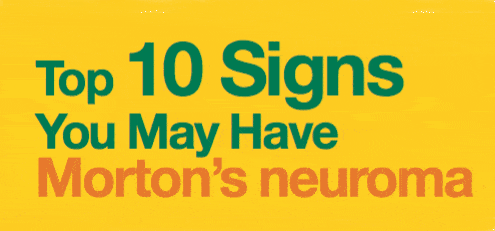Morton’s neuroma is a painful condition that can have a significant impact on the quality of life of the affected person. Treatment options vary, and different treatments often have different outcomes.
The prognosis of Morton’s neuroma mostly depends upon the state of the foot when the diagnosis is made and the prior treatment given. If aggressive interventional treatment is given early, the chance of long-term pain relief increases.
In addition, the overall experience of the practitioner doing the procedure also affects the long-term success. The more experienced the practitioner, the greater the likelihood of long-term pain relief. If a patient has suffered for a long time before seeking treatment or if there has been multiple unsuccessful treatments in the past, the chance of achieving long-term pain relief decreases.
Generally, a course of radiofrequency ablation or cyro-ablation has been shown to be effective in approximately 80 to 85% of patients. If done under ultrasound or electrostimulatory guidance, their effectiveness improves and they have about the same effectives as ultrasound guided steroid injections, achieving long term pain relief in approximately 85 to 90% of patients. Some studies show even higher percentage pain relief with these procedures.

Surgical results vary greatly with effective long-term pain relief ranging from 80% to 90 %. A number of studies show up to 35% of patients continue with some ongoing long-term pain post neurectomy. On average, weight bearing occurs 16 days post surgery and return to work after 22 days for the dorsal surgical approach (top of the foot) and in the case of the plantar surgical approach (bottom of the foot) weight bearing and return to work both take about 10 days longer. The effectiveness of surgery is especially related to the experience of the surgical practitioner.
In some patients, the painful symptoms of Morton’s neuroma may recur despite surgery. These chronic symptoms arise because a small part of the end of the nerve left behind may develop into a neuroma (a “stump neuroma”), or post surgical scarring may occur also resulting in pain. The chance of a stump neuroma can be decreased with good surgical technique (which involves burying the nerve end in the foot muscles.)
However, recent studies have shown excellent results for the treatment of Morton’s neuroma with ultrasound-guided neurolytic alcohol injections, ultrasound guided radiofrequency ablation, and ultrasound guided cyroablation thus decreasing the need for surgery.
Morton’s neuroma can be a painful condition. A number of different factors play a role in its long-term prognosis, and steps must be taken to prevent it from recurring.


By providing us with your information you are consenting to the collection and use of your information in accordance with our Terms of Service and Privacy Policy.